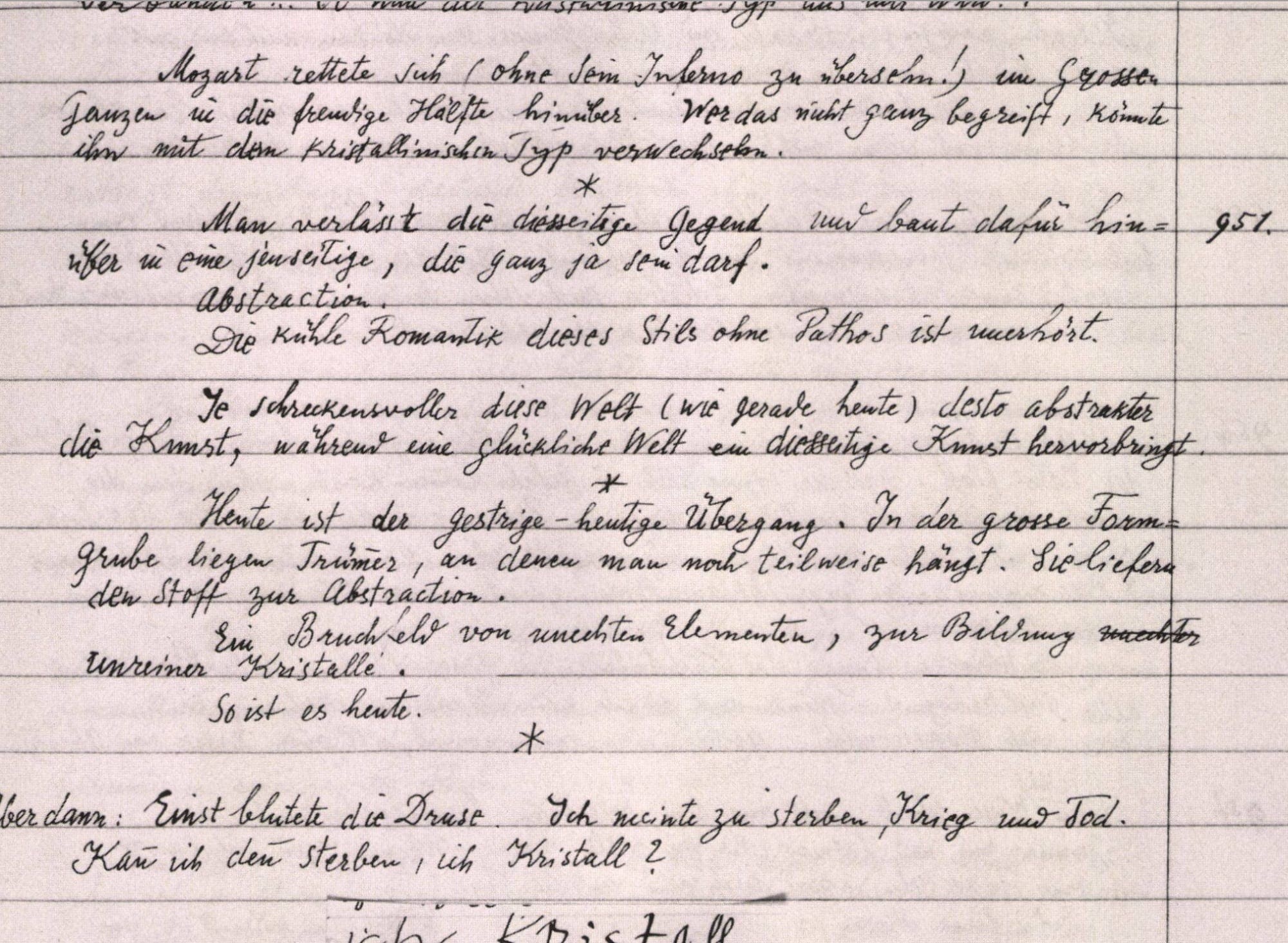1915 wrote Paul Klee the following in his diary:
"The more terrifying this world (like today) the more abstract the art, while a happy world produces earthly art."
Paul Klee, diary entry (1915, #951)
That's why I'd like to go up Jacob van Hoddis to draw attention. His poems were highly valued by the Dadaists in the 1910s, especially towards the end of the First World War.
Aurora
Home we trudge distraught and old,
the bright yellow night has faded.
We see, as above the lanterns, cold
and dark blue, the sky threatens and glows.Now the long roads wind, hard
Jacob van Hoddis
and spotted, soon, in the broad splendor of days.
The strong Aurore brings him here,
with thick, red frozen fingers, timid.
Published January 11, 1911 Jacob van Hoddis in the magazine “Der Demokratie” the following poem.
end of the world
The citizen's hat flies off his pointed head,
In all the air it resounds like a shout.
Roofers fall and go in two
And on the coasts – one reads – the tide is rising.The storm is here, the wild seas are hopping
Jakob van Hoddis, 1911
On land to crush thick dams.
Most people have a cold.
The trains fall off the bridges.
Jacob van Hoddis is considered a poet of literary expressionism and is also seen by some as one of the few German representatives of surrealism, probably because of the Dadaist elements in his poems.
His brother died for Germany in the First World War, his sisters fled to Palestine with their mother in 1933, and he was murdered by his fellow Germans in Sobibor in 1942.
Incidentally, the name van Hoddis is an agitated word from his birth name Hans Davidsohn.
"The world is always ending, for someone."
Neil Gaiman, Signal to Noise (1992)





